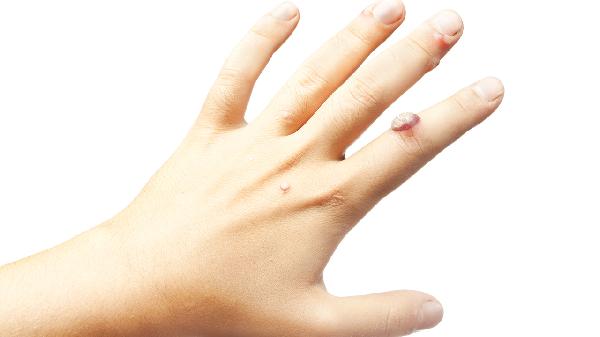AIDS, a deadly disease that emerged after cancer, is known as the "super cancer" and "global plague" due to its strong transmission, rapid onset, and high mortality rate. Since its first discovery among male homosexuals in the United States in 1981, it quickly spread globally. By May 1, 1991, the global number of AIDS cases had accumulated to 359,000. According to estimates by epidemiologists at the World Health Organization, the number of people infected with the HIV virus in Asia alone would increase from 350,000 in 1996 to over 2 million by 2000. Since the discovery of the first HIV case, the medical community has been conducting research, but so far, no ideal treatment has been reported. There is currently no specific drug to cure AIDS, nor is there an effective biological vaccine to prevent it, resulting in an extremely high fatality rate. Therefore, AIDS is referred to as the "plague of the post-historic era," "super cancer," and "century killer." In our country, AIDS has been listed as the top priority among the three major diseases to be controlled. So, what are the treatment methods for HIV infection?

Treatment Principles
For acute HIV infection and asymptomatic HIV infection, no anti-HIV drug treatment is required, but patients should rest, strengthen nutrition, and avoid infecting others. Comprehensive treatment for AIDS patients mainly includes the following aspects: antiviral chemotherapy targeting the cause, mainly using highly active antiretroviral therapy (HAART), also known as cocktail therapy; immunotherapy to rebuild the immune system and the use of therapeutic vaccines; treatment of AIDS-related complications (opportunistic infections, tumors, etc.); supportive treatment and nursing, and psychological counseling.
Treatment Drugs
Currently, there are 4 categories of anti-HIV drugs, totaling 19 types, including 9 nucleoside reverse transcriptase inhibitors (NRTI) (including two compound preparations), 3 non-nucleoside reverse transcriptase inhibitors (NNRTI), 6 protease inhibitors (PI) (including one compound preparation), and one fusion inhibitor (FI). Among them, one FI is enfuvirtide (T-20), which was approved by the U.S. FDA for clinical treatment of HIV infection in March 2003, but it has limited related data and is not yet available domestically.
Treatment Timing
For patients in the acute infection phase, those who have seroconverted within 6 months and all patients with clinical symptoms of AIDS should receive antiretroviral therapy. For chronic HIV infections, it is generally considered that treatment should be determined based on the patient's viral load, CD4 cell count, and clinical manifestations (Table 2). With the increasing understanding of the balance between HIV replication and the immune system's ability to fight HIV, CD4 cell count may be a more reliable indicator of disease progression than viral load. Current treatment guidelines recommend starting treatment when the CD4 cell count is ≤350/μL, and regular follow-up after treatment is necessary.
Treatment Plans
(1) First-line treatment plan
The first-line drugs for adults and adolescents are listed in Table 3. All drug combinations include two nucleoside anti-HIV drugs and one other type of anti-HIV drug. ZDV/3TC is the preferred first-line drug. Other alternative nucleoside anti-HIV drug combinations include d4T/3TC, d4T/ddI, and ZDV/ddI, which can be selected as needed. However, ZDV/d4T cannot be used in combination due to antagonistic effects. Additionally, two nucleoside drugs cannot be used alone for antiviral treatment because they cannot effectively inhibit HIV replication and may lead to drug resistance.
(2) Second-line treatment plan
If treatment fails or toxic reactions occur, a second-line treatment plan should be adopted. The second-line treatment plan for adults and adolescents with HIV infection is listed in Table 4. The ideal alternative to ZDV/3TC is d4T/ddI. Additionally, ZDV/ddI can be used in place of d4T/3TC, and vice versa, but attention must be paid to cross-resistance between nucleoside drugs. If the efficacy of second-line drugs is poor, RTV-PI drugs (IDV/RTV, LPV/RTV, SQV/RTV) are preferred in combination with nelfinavir (NFV).
(3) Special population treatment plans
① Women of childbearing age or pregnant women: WHO recommends the combined use of ZDV, 3TC, nevirapine (NVP), nelfinavir (NFV), SQV, and low-dose RTV, as these drugs can be used in pregnant women. EFV has teratogenic effects and is not recommended for women of childbearing age. Women taking ARV drugs must adopt appropriate and effective contraceptive measures. Some antiviral drugs (nevirapine and EFV, as well as all RTV-PI) can reduce the blood concentration of oral contraceptives, so women receiving these drugs need to increase the dose of contraceptives.
② Children: Many ARV drugs used in adults can also be used in children, but the dosage should be adjusted according to the child's weight and body surface area. The recommended first-line drugs for children include ZDV/3TC plus a non-nucleoside drug (nevirapine or EFV) or abacavir (ABC). It should be noted that due to insufficient clinical data, EFV cannot be used in children under 3 years old. In cases of first-line drug treatment failure, the second-line drug options include changing the nucleoside core drug (e.g., changing ZDV 3TC to d4T ddI) and adding a protease inhibitor. Due to the lack of formulations suitable for children for indinavir (IDV) and SQV, only LPV/RTV and nelfinavir (NFV) can be used in children.
























